 A feature of the last few Cinevents that The Picture Show wisely chose to continue this year is the 12-chapter serial, screening three chapters at the beginning of each of the convention’s four days. As in prior years, this year’s serial was from Republic — naturally enough, since Republic was, well, if not the Tiffany’s, at least the Zale’s of chapter-play production. And after the relatively exotic serials of the last few years — with heroes taking on a Japanese spy ring during World War II (The Masked Marvel, Cinevent 50), lost-world savages on a volcanic island above the Arctic Circle (Hawk of the Wilderness, C-51), and Teutonic saboteurs before America’s entry into the war (King of the Texas Rangers, C-52) — this one, for a refreshing change of pace, was a standard, good old-fashioned cowboy shoot-’em-up, Adventures of Red Ryder (1940). As anybody who ever read a comic book or the funny-pages in a newspaper between 1938 and 1964 can tell you, Red Ryder was the tall, square-jawed, white-hatted, red-haired hero of the Painted Valley Ranch in the Blanco Basin of the San Juan Mountains, noted for never killing the bad guys but simply shooting the guns out of their hands. His gal was Beth Wilder, his youthful Native American sidekick was Little Beaver, and his archenemy was the dastardly Ace Hanlon. Red made his debut in newspapers in 1938, then expanded to comic books in 1939, this Republic serial in 1940, radio in 1942, B-movie features in 1944, and even a couple of unsold pilots for TV series in the 1950s and ’60s.
A feature of the last few Cinevents that The Picture Show wisely chose to continue this year is the 12-chapter serial, screening three chapters at the beginning of each of the convention’s four days. As in prior years, this year’s serial was from Republic — naturally enough, since Republic was, well, if not the Tiffany’s, at least the Zale’s of chapter-play production. And after the relatively exotic serials of the last few years — with heroes taking on a Japanese spy ring during World War II (The Masked Marvel, Cinevent 50), lost-world savages on a volcanic island above the Arctic Circle (Hawk of the Wilderness, C-51), and Teutonic saboteurs before America’s entry into the war (King of the Texas Rangers, C-52) — this one, for a refreshing change of pace, was a standard, good old-fashioned cowboy shoot-’em-up, Adventures of Red Ryder (1940). As anybody who ever read a comic book or the funny-pages in a newspaper between 1938 and 1964 can tell you, Red Ryder was the tall, square-jawed, white-hatted, red-haired hero of the Painted Valley Ranch in the Blanco Basin of the San Juan Mountains, noted for never killing the bad guys but simply shooting the guns out of their hands. His gal was Beth Wilder, his youthful Native American sidekick was Little Beaver, and his archenemy was the dastardly Ace Hanlon. Red made his debut in newspapers in 1938, then expanded to comic books in 1939, this Republic serial in 1940, radio in 1942, B-movie features in 1944, and even a couple of unsold pilots for TV series in the 1950s and ’60s.
In addition to being the avatar of clean living and upright law and order, Red Ryder was also a pioneer of tie-in merchandising. Millions who weren’t even born when the Red Ryder strip ended in 1964 are nevertheless aware, thanks to 1983’s A Christmas Story, of the Daisy Official Red Ryder Carbine-Action 200-Shot Range Model Air Rifle With a Compass in the Stock and This Thing Which Tells Time, first marketed in 1940 and — believe it or not! — still available from the Daisy Manufacturing Company of Rogers, Arkansas (not that exact model, now discontinued, but plenty of others).
But back to that 1940 Republic serial. The story was the old western trope about the crooked banker in cahoots with outlaws to terrorize local ranchers into selling their property dirt cheap so the banker can make a handsome profit by selling to the railroad that only he knows is coming through. Red was the son of one such rancher, swinging into action when his father is murdered after getting too close to discovering the banker’s plot.
The serial was directed by William Witney and John English (the same team responsible for Hawk of the Wilderness and King of the Texas Rangers), and Red was played by Don “Red” Barry. Neither Witney nor English thought Barry was right for the part, and Barry himself later admitted he was miscast — at 5 ft. 4, he was a full foot shorter than the lanky Red Ryder of the comics. But Republic president Herbert Yates insisted (he compared Barry to James Cagney), and that was that. Evidently, Barry suffered from a short-man pugnacity complex, because both directors came to detest him, as did most of the cast and crew — leading lady Vivian Coe, as Red’s girl (renamed Beth Andrews), remembered, “I don’t like saying negative things about the departed, but he wasn’t a very nice fellow,” and Barry himself, years later, admitted he had been “a brash, smart ass young punk.” Still, it must be said that Barry does okay in the part, playing Red Ryder as a bantam rooster rather than the tall-in-the-saddle type — though it does take some suspension of disbelief when Red goes into fistfights with baddies who have several inches and 20-30 pounds on him (Noah Beery Sr., the serial’s Ace Hanlon, was 6 ft. 1 in.)
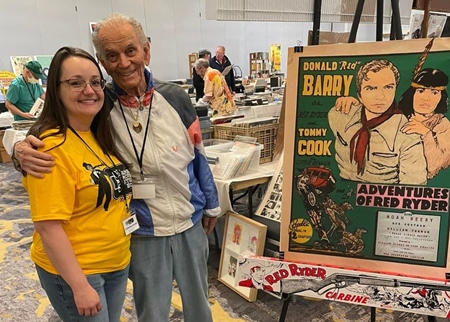 Little Beaver was played by nine-year-old Tommy Cook, who is not only still with us at 91 (the last survivor of this or any other Republic serial), but was an honored guest in Columbus; here he is shown with Picture Show Chair Samantha Glasser in the Dealers Room. (And by the way, do you see what’s hanging on the easel under the poster for the serial? Yep, it’s a Daisy Red Ryder BB gun. They raffled one off during the weekend — albeit with no compass or sundial in the stock — and I admit I was tempted for a second or two. But [1] I’d never have gotten it on the plane; and [2] even if I had it shipped to my home, what could I do with it then? I’d probably just shoot my eye out.)
Little Beaver was played by nine-year-old Tommy Cook, who is not only still with us at 91 (the last survivor of this or any other Republic serial), but was an honored guest in Columbus; here he is shown with Picture Show Chair Samantha Glasser in the Dealers Room. (And by the way, do you see what’s hanging on the easel under the poster for the serial? Yep, it’s a Daisy Red Ryder BB gun. They raffled one off during the weekend — albeit with no compass or sundial in the stock — and I admit I was tempted for a second or two. But [1] I’d never have gotten it on the plane; and [2] even if I had it shipped to my home, what could I do with it then? I’d probably just shoot my eye out.)
My only regret of the weekend is that I didn’t get a chance to meet and chat with Mr. Cook; for one thing, I’d have liked to hear what he had to say about working with Red Barry. Somehow I even managed to miss his interview with Caroline Breder-Watts on Saturday morning. But The Picture Show’s Facebook page has a video excerpt of that interview in which Mr. Cook tells an amusing anecdote about doing a whisky commercial with Orson Welles; he (Mr. Cook) could easily pass for 25 years younger than he is. Click here.
 The first feature of the weekend, Behind the News, was also from Republic, and also from 1940. Lloyd Nolan played a once-great reporter for a major newspaper in “State City” (probably a pseudonym for San Diego, Calif., since the plot later reveals it to be within driving distance of Calexico). Now jaded and cynical, he gets an annoying kick in the conscience when his latest padded expense account enrages his harried managing editor (reliable old Robert Armstrong). To get back at the reporter, the editor saddles him with an idealistic gee-whiz cub reporter straight out of journalism school (the prolific Frank Albertson, best remembered now as Sam “Hee-haw!” Wainwright in It’s a Wonderful Life). When the youngster’s gung-ho admiration for his past work shows Nolan up for the bitter, burned-out failure he has become, he arranges a series of humiliations that ruin Albertson’s standing at the paper. Then Albertson uncovers a case of an innocent Mexican-American being railroaded on a trumped-up murder charge, but nobody will believe him, so Nolan’s long-suffering girlfriend (the earnest, likable Doris Davenport) prods him into taking the boy’s part. It was a solid little newspaper melodrama, well-plotted and snappily directed by Joseph Santley.
The first feature of the weekend, Behind the News, was also from Republic, and also from 1940. Lloyd Nolan played a once-great reporter for a major newspaper in “State City” (probably a pseudonym for San Diego, Calif., since the plot later reveals it to be within driving distance of Calexico). Now jaded and cynical, he gets an annoying kick in the conscience when his latest padded expense account enrages his harried managing editor (reliable old Robert Armstrong). To get back at the reporter, the editor saddles him with an idealistic gee-whiz cub reporter straight out of journalism school (the prolific Frank Albertson, best remembered now as Sam “Hee-haw!” Wainwright in It’s a Wonderful Life). When the youngster’s gung-ho admiration for his past work shows Nolan up for the bitter, burned-out failure he has become, he arranges a series of humiliations that ruin Albertson’s standing at the paper. Then Albertson uncovers a case of an innocent Mexican-American being railroaded on a trumped-up murder charge, but nobody will believe him, so Nolan’s long-suffering girlfriend (the earnest, likable Doris Davenport) prods him into taking the boy’s part. It was a solid little newspaper melodrama, well-plotted and snappily directed by Joseph Santley.
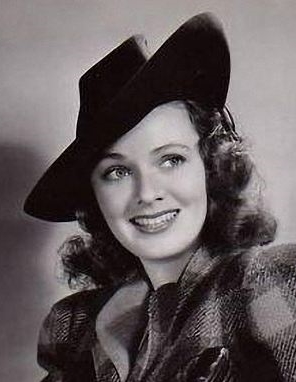 Behind the News was also the swan song of Doris Davenport after six years and nine pictures, four of them with no screen credit. At the beginning and end of those six years she did seem to be going places. Her first picture was in 1934, playing Eddie Cantor’s girlfriend in Kid Millions. Other bits followed, interspersed with fashion modeling to make ends meet. In 1938, under the name Doris Jordan, she tested for Scarlett O’Hara in Gone With the Wind and, according to Dave Domagala’s program notes, “was actually one of the finalists.” (Well, actually, “one of the semi-finalists” is more like it. On November 18, 1938, David Selznick listed his Scarlett front-runners as Paulette Goddard, Doris Jordan, Jean Arthur, Katharine Hepburn, and Loretta Young, adding that “Jordan is a complete amateur”. By December 12, Selznick was writing, “it’s narrowed down to Paulette, Jean Arthur, Joan Bennett, and Vivien Leigh” — with Leigh having the inside track.) Doris Jordan/Davenport’s test for Scarlett impressed producer Samuel Goldwyn enough to get her cast in The Westerner (1940) opposite Gary Cooper for director William Wyler. Wyler wasn’t impressed (he wanted her part for his wife, Margaret Tallichet), but Goldwyn thought she had real star potential. After that came Behind the News — then nothing. Some sources say she simply got no further offers, though it seems likely that if nothing else, Republic at least could have found something for her to do. One dramatic story, attributed to David Ragan’s Who’s Who in Hollywood but unconfirmed anywhere else, claims that an auto accident after shooting The Westerner crushed her legs and forced her to use a cane for the rest of her days. Grain of salt on that one, I think; if that’s true, then how did she make Beyond the News? Whatever the reason, Doris Davenport lived on until 1980 but never made another picture.
Behind the News was also the swan song of Doris Davenport after six years and nine pictures, four of them with no screen credit. At the beginning and end of those six years she did seem to be going places. Her first picture was in 1934, playing Eddie Cantor’s girlfriend in Kid Millions. Other bits followed, interspersed with fashion modeling to make ends meet. In 1938, under the name Doris Jordan, she tested for Scarlett O’Hara in Gone With the Wind and, according to Dave Domagala’s program notes, “was actually one of the finalists.” (Well, actually, “one of the semi-finalists” is more like it. On November 18, 1938, David Selznick listed his Scarlett front-runners as Paulette Goddard, Doris Jordan, Jean Arthur, Katharine Hepburn, and Loretta Young, adding that “Jordan is a complete amateur”. By December 12, Selznick was writing, “it’s narrowed down to Paulette, Jean Arthur, Joan Bennett, and Vivien Leigh” — with Leigh having the inside track.) Doris Jordan/Davenport’s test for Scarlett impressed producer Samuel Goldwyn enough to get her cast in The Westerner (1940) opposite Gary Cooper for director William Wyler. Wyler wasn’t impressed (he wanted her part for his wife, Margaret Tallichet), but Goldwyn thought she had real star potential. After that came Behind the News — then nothing. Some sources say she simply got no further offers, though it seems likely that if nothing else, Republic at least could have found something for her to do. One dramatic story, attributed to David Ragan’s Who’s Who in Hollywood but unconfirmed anywhere else, claims that an auto accident after shooting The Westerner crushed her legs and forced her to use a cane for the rest of her days. Grain of salt on that one, I think; if that’s true, then how did she make Beyond the News? Whatever the reason, Doris Davenport lived on until 1980 but never made another picture.
Next came three silent Our Gang shorts from Hal Roach, The Champeen (1923) featuring Ernie “Sunshine Sammy” Jackson, Roach’s first African-American child star, then Barnum & Ringling, Inc. and The Spanking Age (both 1928).
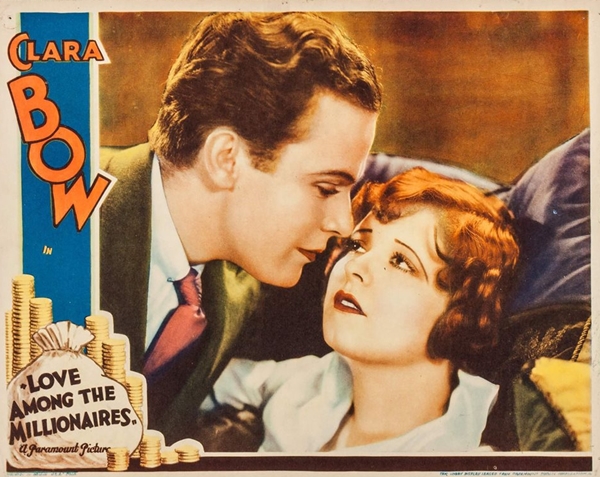
The last feature before the dinner break was a highlight of the whole weekend, at least as far as I was concerned: Love Among the Millionaires (1930) starring Clara Bow. I’ve said it before but it bears repeating, and I’ll repeat it as often as I feel it’s necessary: There was never a more charming and delightful movie star than Clara Bow. As charming and as delightful, granted, but more so? None. Ever.
That said, I must concede that if somebody asked me what was the big deal about Clara Bow, Love Among the Millionaires isn’t necessarily the first movie I’d point them to. (Where would I point them, you ask? Well…to Mantrap [1926], Wings and It [both ’27] — pretty much in that order.)
With Millionaires, the story sets Clara up as a diner waitress being romanced by the son of a railroad tycoon, then playing the low-class hussy to drive him away and spare him being disowned by his father. It was too familiar by half, as old as La Dame aux Camélias and as recent as Mary Pickford in My Best Girl (1927). Worse, it didn’t play to Clara’s strengths, as critics at the time were quick to point out. As Richard Barrios suggests in his insightful history A Song in the Dark, it’s almost as if Paramount were trying to turn Clara into Janet Gaynor — a wasted effort, you’d think, considering that she was already Clara Bow. (Richard, by the way, also wrote Love Among the Millionaires’ notes for The Picture Show program.)
Today, with hindsight, we know that Clara’s career was deep into twilight; her off-screen emotional problems were catching up, and while her supposed mike-fright didn’t show as much as later legend has it, the fun was going out of the work for her, and public scandals were belying the Janet Gaynor act. There was an unspoken sense that her career wasn’t on the right track; fan magazines were speculating on who would be “the next Clara Bow” — the implication being that the present one wouldn’t be on top much longer.
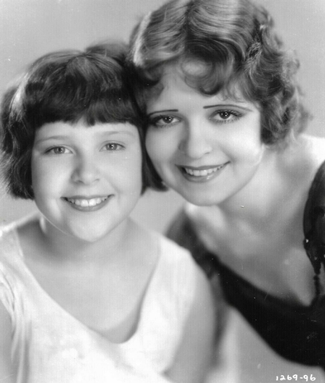 Still, Love Among the Millionaires was a hit — the true measure of Clara’s stardom, as with all stars past, present and future, was that she was expected and able to carry material like this. To be fair, she didn’t bear the burden alone. She got good support from 9-year-old Mitzi Green (shown here) as her brassy sister, Charles Sellon as their father, and Stanley Smith as Clara’s boyish sweetheart. Comic relief was provided by Stuart Erwin and Skeets Gallagher as two would-be suitors for Clara’s hand — although frankly, they come off more as a bickering couple than as romantic rivals.
Still, Love Among the Millionaires was a hit — the true measure of Clara’s stardom, as with all stars past, present and future, was that she was expected and able to carry material like this. To be fair, she didn’t bear the burden alone. She got good support from 9-year-old Mitzi Green (shown here) as her brassy sister, Charles Sellon as their father, and Stanley Smith as Clara’s boyish sweetheart. Comic relief was provided by Stuart Erwin and Skeets Gallagher as two would-be suitors for Clara’s hand — although frankly, they come off more as a bickering couple than as romantic rivals.
I’ve always enjoyed Love Among the Millionaires, and I was happy for the chance to see it again in Columbus. It was Clara’s only real musical — her ability to sell a song had surprised everyone, not least herself, in Paramount on Parade earlier in 1930 — and while her untrained voice was no threat to Jeanette MacDonald, she could carry a tune. The L. Wolfe Gilbert/Abel Baer songs may not be classics, but they’re catchy enough, and she puts them across — singing live on the set, mind you — with confidence and infectious gusto. As Richard Barrios says in his program notes, if musicals hadn’t fallen out of favor and her own demons hadn’t overwhelmed her, Clara might have reinvented herself for the sound era. But by the time musicals came back in style, she was out of the biz for good.
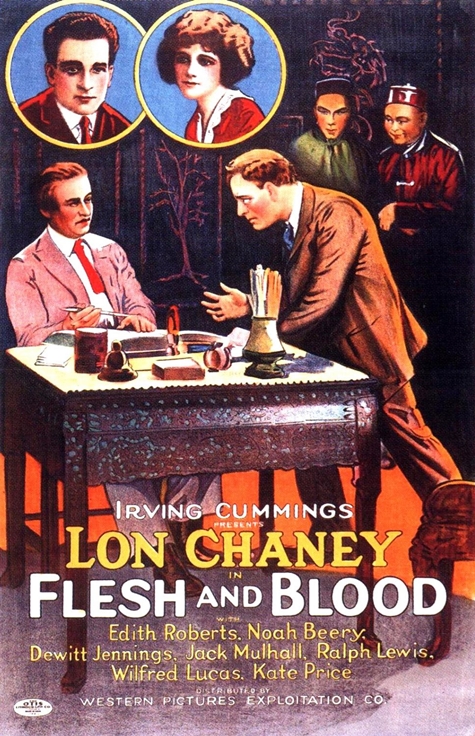
After dinner came the first of the weekend’s Laurel and Hardy shorts, Our Wife (1931). Stan and Ollie try to pull off an elopement, spiriting Oliver’s intended Dulcy (Babe London) out from under the disapproving nose of her daddy James Finlayson. Ollie entrusts Stan with the task of finding a getaway car, and the disasters pile up from there. When the wedding party finally arrives before the justice of the peace, he turns out to be Ben Turpin — who, thanks to his famously crossed eyes, marries Dulcy to the wrong guy.
Next it was Flesh and Blood (1922), with Lon Chaney as a man unjustly convicted and imprisoned for a crime he didn’t commit. After 15 years in the joint, he makes an escape to see his wife and daughter, and to find the ex-law-partner who framed him (Ralph Lewis) and force a confession that will clear his name. He is aided in this by a friend in San Francisco’s Chinatown (Noah Beery again, welcome as ever but a little hard to swallow as a Chinese tong lord). Disguised as a wheelchair-bound invalid to elude police, he learns that his wife has died and his daughter, now a beautiful young woman (Edith Roberts), is working in a skid row mission. She believes her father is dead, so he doesn’t disabuse her, but he keeps a watchful eye on her as he plots his revenge. Things get complicated when he learns that his daughter is in love with and engaged to marry the son of his old nemesis (Jack Mulhall).
Lon Chaney is widely regarded today as a horror movie actor, mainly on the strength of The Hunchback of Notre Dame (1923) and The Phantom of the Opera (’25). In fact, in most of his pictures, including those two, lugubrious melodrama was his actual stock in trade. (It took the Andrew Lloyd Webber musical of Phantom to re-assert the fact that Gaston Leroux’s 1910 novel is a romantic melodrama, not a horror story.) Flesh and Blood is a good specimen of that uniquely Lon Chaney brand; it echoed elements in his earlier movies even as it foreshadowed elements of pictures he had yet to make.
There’s some question as to whether the picture survives intact. IMDb gives the running time as 74 min.; in the Exhibitor’s Herald of August 26, 1922 it’s listed at five reels, about the same (in the silent days a picture’s length was expressed in reels, not minutes, due to variations in projector speeds; one reel was roughly 15 minutes). The Picture Show’s print ran 61 min., which was the length of the trimmed-down version offered for rent by Eastman House’s Kodascope Library in the 1920s and ’30s. Quite a few silent movies appear to have survived only in these Kodascope versions (Eastman House having been pioneers in film preservation), and this seems to be one of them. In any case, there are no gaping holes in the picture as it stands; the gang at Eastman Kodak were pretty careful in editing films down for home use, for which we can be grateful.
Flesh and Blood is also noteworthy as an early feature by actor-turned-producer-turned director Irving Cummings; on this one he served in the last two capacities. Cummings would go on to be a hard-working and reliable director, especially at 20th Century Fox. He specialized in musicals, turning out some of the best examples starring Shirley Temple (Curly Top, Poor Little Rich Girl, Little Miss Broadway), Alice Faye (Hollywood Cavalcade, Lillian Russell, That Night in Rio) and Betty Grable (Down Argentine Way, Springtime in the Rockies, The Dolly Sisters), as well as In Old Arizona (taking over for the injured Raoul Walsh) and The Story of Alexander Graham Bell.
 Marry Me Again (1953) was lightweight, a bit dated, but pretty dang funny for all that. It starred Robert Cummings and Marie Wilson, both movie veterans just then getting a taste of television success. Wilson had just transferred her hit radio show My Friend Irma to TV (after two movies, in 1949 and ’50) and was America’s favorite lovably ditzy blonde. Cummings was halfway through his first sitcom, the one-season My Hero; his biggest TV success, Love That Bob, was still two years away (which explains why Marie Wilson gets top billing on this poster).
Marry Me Again (1953) was lightweight, a bit dated, but pretty dang funny for all that. It starred Robert Cummings and Marie Wilson, both movie veterans just then getting a taste of television success. Wilson had just transferred her hit radio show My Friend Irma to TV (after two movies, in 1949 and ’50) and was America’s favorite lovably ditzy blonde. Cummings was halfway through his first sitcom, the one-season My Hero; his biggest TV success, Love That Bob, was still two years away (which explains why Marie Wilson gets top billing on this poster).
In Marry Me Again the two play a couple whose wedding is interrupted just short of “I now pronounce you…” when Cummings gets word that he’s been called up for the Korean War. So the wedding goes on a back burner while he jets off to do his bit as a fighter pilot. He comes home a war hero, eager to pick up where he and Wilson left off at the altar. At his welcome-home party, he declares that he intends to be the breadwinner in the family, with his wife staying home where women belong (that sort of thing played better in 1953 than it does now). The problem is, unbeknownst to him, his bride-to-be has inherited a million bucks while he was away. She tries to keep it secret, but the beans get spilled before the wedding. She’s rich, he can’t find a job, so the wedding is off until things get back the way God intended.
Like I say, a bit dated. Still, it was very funny, once you tune in to the fact that the groom-to-be isn’t supposed to be an obnoxious patriarchal jerk. Wilson and Cummings’s comedy chops are considerable, and so are those of writer/director Frank Tashlin. Tashlin was a successful director of cartoon shorts at Warner Bros. who managed the unique feat of transitioning into equal success directing live-action comedies (Son of Paleface, Hollywood or Bust, Will Success Spoil Rock Hunter?). Tashlin never lost that Looney Tunes wackiness, and both his cartoons and his movies profited from it.
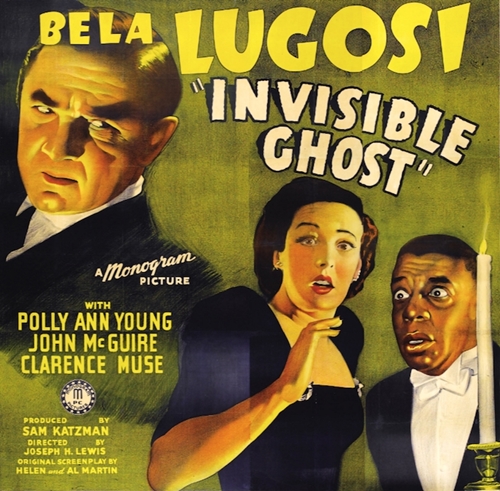 The first day wrapped up with a diverting low-camp thriller from Monogram, Invisible Ghost (1941). Bela Lugosi played an upstanding citizen living on his country estate with his daughter (Polly Ann Young) and various servants. His one peculiarity is an obsession with the wife who deserted him years ago; now every year on their anniversary he has dinner with her, requiring the butler (Clarence Muse) to serve her empty chair, and talking to her as if she is really there. What he doesn’t know is she is there, wandering the grounds of the estate, brain-damaged, for reasons too complicated to explain. He sees her every once in a while, and when he does he goes into a murderous trance and strangles the first person he sees. His killings have all gone unsolved, and even he doesn’t remember them, but when he murders his maid, who happens to be an ex-girlfriend of his daughter’s fiancé (John McGuire), the fiancé is convicted and executed for the crime. Then the fiancé’s twin (McGuire again) shows up from South America to investigate his brother’s death.
The first day wrapped up with a diverting low-camp thriller from Monogram, Invisible Ghost (1941). Bela Lugosi played an upstanding citizen living on his country estate with his daughter (Polly Ann Young) and various servants. His one peculiarity is an obsession with the wife who deserted him years ago; now every year on their anniversary he has dinner with her, requiring the butler (Clarence Muse) to serve her empty chair, and talking to her as if she is really there. What he doesn’t know is she is there, wandering the grounds of the estate, brain-damaged, for reasons too complicated to explain. He sees her every once in a while, and when he does he goes into a murderous trance and strangles the first person he sees. His killings have all gone unsolved, and even he doesn’t remember them, but when he murders his maid, who happens to be an ex-girlfriend of his daughter’s fiancé (John McGuire), the fiancé is convicted and executed for the crime. Then the fiancé’s twin (McGuire again) shows up from South America to investigate his brother’s death.
It’s all a crock, but somehow director Joseph H. Lewis manages to make something out of this sow’s ear of a script; he draws straight-faced performances from everyone; he (aided by cinematographers Marcel Le Picard and Harvey Gould) enhances the modest sets with atmospheric and expressive (even expressionist) lighting; and he delivers some surprisingly effective chills along the way. Invisible Ghost, all 63 min. of it, is available here on YouTube, if you’re curious. Nine years after giving this Monogram potboiler what conviction it has, Lewis would go on to direct the noir cult classic Gun Crazy (1950).

 I’m back from Columbus, where Memorial Day Weekend was always Cinevent Weekend until 2019, when Cinevent Chair Michael Haynes announced that Cinevent 52 in 2020 would be the last — but that the tradition of a Memorial Day classic movie convention in Ohio’s capital would continue under a new name (to be determined) and new management (albeit with many familiar faces performing the same volunteer services as before).
I’m back from Columbus, where Memorial Day Weekend was always Cinevent Weekend until 2019, when Cinevent Chair Michael Haynes announced that Cinevent 52 in 2020 would be the last — but that the tradition of a Memorial Day classic movie convention in Ohio’s capital would continue under a new name (to be determined) and new management (albeit with many familiar faces performing the same volunteer services as before).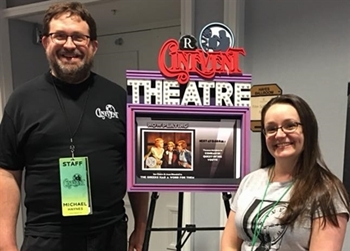 Last October brought the final installment of Cinevent, presented in conjunction with the fledgling Columbus Moving Picture Show. Cinevent’s Michael Haynes passed the torch to Samantha Glasser (right), who stepped up from Dealers Coordinator to Chair, overseeing the activities of a cadre of dedicated Cinevent volunteers, who elected (unanimously, as far as I could tell) to continue under the new banner.
Last October brought the final installment of Cinevent, presented in conjunction with the fledgling Columbus Moving Picture Show. Cinevent’s Michael Haynes passed the torch to Samantha Glasser (right), who stepped up from Dealers Coordinator to Chair, overseeing the activities of a cadre of dedicated Cinevent volunteers, who elected (unanimously, as far as I could tell) to continue under the new banner.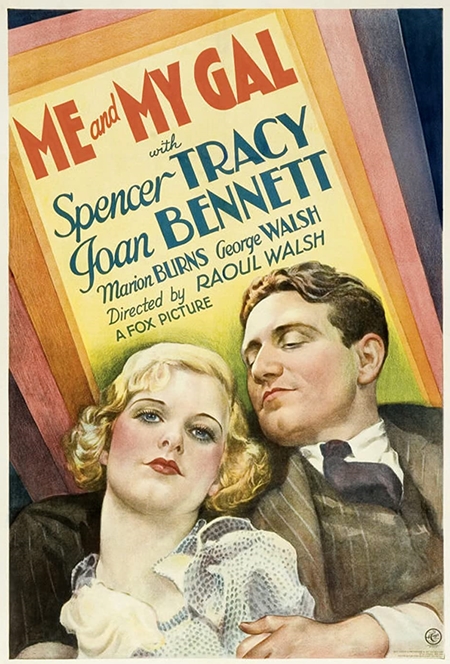 Well, whether the Wexner Center admitted it or not, Pre-Code at Fox is what we got, starting with Me and My Gal (1932, not to be confused with For Me and My Gal, the Judy Garland/Gene Kelly MGM musical of ten years later). This one was an urban melo-dramedy directed by Raoul Walsh and starring Spencer Tracy and Joan Bennett. The story wasn’t much. Tracy played Danny Dolan, a happy-go-lucky waterfront cop who takes a shine to Helen (Bennett), a waitress in a greasy spoon on his beat. Meanwhile, her sister Kate (Marion Burns), though married to an adoring nice-guy dork, can’t resist her gangster ex-boyfriend Duke (George Walsh), who has her wrapped around (phallic symbol alert!) his little finger. While hubby is away in the merchant marine, Duke breaks out of prison and Kate hides him in the attic of the apartment she shares with her father-in-law, who is mute and wheelchair-bound from a stroke.
Well, whether the Wexner Center admitted it or not, Pre-Code at Fox is what we got, starting with Me and My Gal (1932, not to be confused with For Me and My Gal, the Judy Garland/Gene Kelly MGM musical of ten years later). This one was an urban melo-dramedy directed by Raoul Walsh and starring Spencer Tracy and Joan Bennett. The story wasn’t much. Tracy played Danny Dolan, a happy-go-lucky waterfront cop who takes a shine to Helen (Bennett), a waitress in a greasy spoon on his beat. Meanwhile, her sister Kate (Marion Burns), though married to an adoring nice-guy dork, can’t resist her gangster ex-boyfriend Duke (George Walsh), who has her wrapped around (phallic symbol alert!) his little finger. While hubby is away in the merchant marine, Duke breaks out of prison and Kate hides him in the attic of the apartment she shares with her father-in-law, who is mute and wheelchair-bound from a stroke.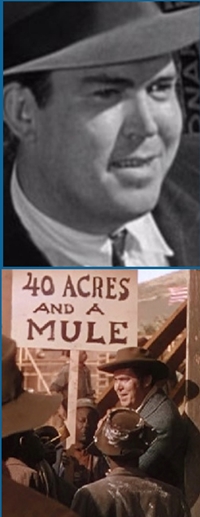 That’s just a sample of the banter. The picture has other things going for it besides two stars in the peppery bloom of youth: reliable old J. Farrell MacDonald as Helen and Kate’s father; Henry B. Walthall, D.W. Griffith’s first leading man, as Kate’s disabled father-in-law, still conveying profound emotion without uttering a sound; Raoul Walsh’s feel for the unpretentiousness of working-class life. (On the other hand, there’s Bert Hanlon as a drunken fisherman hanging out in Helen’s diner, quickly wearing out his welcome with her — and even more quickly with us.)
That’s just a sample of the banter. The picture has other things going for it besides two stars in the peppery bloom of youth: reliable old J. Farrell MacDonald as Helen and Kate’s father; Henry B. Walthall, D.W. Griffith’s first leading man, as Kate’s disabled father-in-law, still conveying profound emotion without uttering a sound; Raoul Walsh’s feel for the unpretentiousness of working-class life. (On the other hand, there’s Bert Hanlon as a drunken fisherman hanging out in Helen’s diner, quickly wearing out his welcome with her — and even more quickly with us.) The evening’s other feature, alas, isn’t so readily available. This was The Warrior’s Husband (1933), a title that sounded more of an oxymoron at the time than it does now. It’s too bad it’s not easy to get to see, because it is hands-down one of the great what-the-hell-is-this??? movies of the 1930s. The Wexner Center presented it in a sparkling brand-new 4K digital transfer, so there may be hope for a DVD or streaming option sometime in the future. If it does happen, you really want to take a gander at this thing.
The evening’s other feature, alas, isn’t so readily available. This was The Warrior’s Husband (1933), a title that sounded more of an oxymoron at the time than it does now. It’s too bad it’s not easy to get to see, because it is hands-down one of the great what-the-hell-is-this??? movies of the 1930s. The Wexner Center presented it in a sparkling brand-new 4K digital transfer, so there may be hope for a DVD or streaming option sometime in the future. If it does happen, you really want to take a gander at this thing. Later that year, when Fox purchased the movie rights to the play, Hepburn was otherwise engaged, so her role went to Fox’s new contract discovery Elissa Landi. And no kidding, in the finished film Landi looks like nothing so much as — wait for it — Katharine Hepburn. This was understandable, since Hepburn was the current Big Thing, and Fox had plans to make Landi the next Big Thing. She had already made an impression on loan to Paramount and Cecil B. DeMille for The Sign of the Cross. Her timorous Christian damsel in that Roman spectacle pales beside her swaggering pagan Antiope; if The Warrior’s Husband were as widely available as The Sign of the Cross, this might be the picture she’s best remembered for today. Here are dueling Antiopes, Landi’s from the movie beside Hepburn’s from the stage; it’s not easy to tell them apart.
Later that year, when Fox purchased the movie rights to the play, Hepburn was otherwise engaged, so her role went to Fox’s new contract discovery Elissa Landi. And no kidding, in the finished film Landi looks like nothing so much as — wait for it — Katharine Hepburn. This was understandable, since Hepburn was the current Big Thing, and Fox had plans to make Landi the next Big Thing. She had already made an impression on loan to Paramount and Cecil B. DeMille for The Sign of the Cross. Her timorous Christian damsel in that Roman spectacle pales beside her swaggering pagan Antiope; if The Warrior’s Husband were as widely available as The Sign of the Cross, this might be the picture she’s best remembered for today. Here are dueling Antiopes, Landi’s from the movie beside Hepburn’s from the stage; it’s not easy to tell them apart.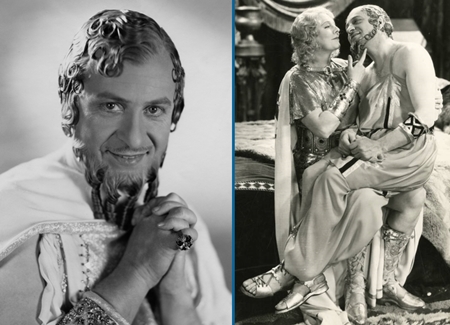 It also gives Hippolyta’s spouse Sapiens (Ernest Truex) ideas above his station. Sapiens (or “Sap”) shares with Theseus the “warrior’s husband” designation of the title, and his newfound assertiveness makes him an ancient advocate of men’s liberation (I guess you’d call him an early “masculist”).
It also gives Hippolyta’s spouse Sapiens (Ernest Truex) ideas above his station. Sapiens (or “Sap”) shares with Theseus the “warrior’s husband” designation of the title, and his newfound assertiveness makes him an ancient advocate of men’s liberation (I guess you’d call him an early “masculist”).
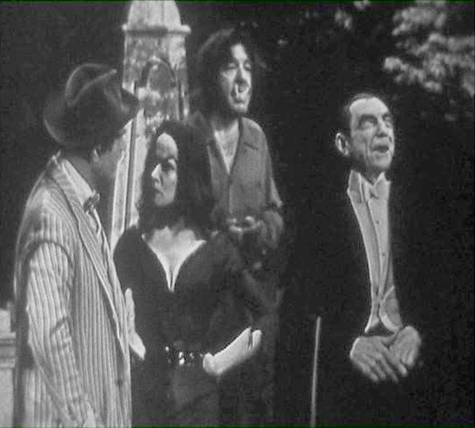 Day 4 of Cinevent 52 landed on October 31, Halloween itself. In keeping with the spirit of the day, the weekend’s Halloween theme made one final appearance in the form of a kinescope (film transcription of a live TV broadcast) excerpt from The Red Skelton Show of June 17, 1954. The 20-minute sketch — titled “Dial ‘B’ for Brush”, a reference to Hitchcock’s Dial “M” for Murder, then in release — offered Red’s dimwit character Clem Kadiddlehopper as a door-to-door brush salesman with just the kind of empty brain the local mad scientist is looking for to complete his latest sinister experiment. Guests on the episode, shown here with Red/Clem, were (left to right) TV horror-movie host and “glamour ghoul” Vampira (née Maila Elizabeth Niemi), Lon Chaney Jr., and the one and only Bela Lugosi. It was primitive fun; as would often be the case with Skelton’s long-running program, the flubs, mishaps, accidents and ad-libs were funnier than the script.
Day 4 of Cinevent 52 landed on October 31, Halloween itself. In keeping with the spirit of the day, the weekend’s Halloween theme made one final appearance in the form of a kinescope (film transcription of a live TV broadcast) excerpt from The Red Skelton Show of June 17, 1954. The 20-minute sketch — titled “Dial ‘B’ for Brush”, a reference to Hitchcock’s Dial “M” for Murder, then in release — offered Red’s dimwit character Clem Kadiddlehopper as a door-to-door brush salesman with just the kind of empty brain the local mad scientist is looking for to complete his latest sinister experiment. Guests on the episode, shown here with Red/Clem, were (left to right) TV horror-movie host and “glamour ghoul” Vampira (née Maila Elizabeth Niemi), Lon Chaney Jr., and the one and only Bela Lugosi. It was primitive fun; as would often be the case with Skelton’s long-running program, the flubs, mishaps, accidents and ad-libs were funnier than the script.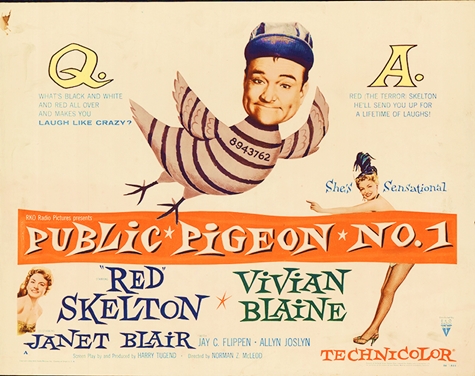
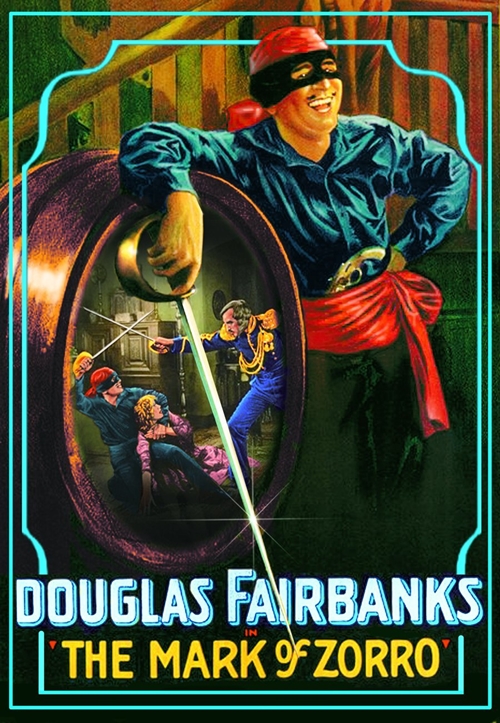 The Mark of Zorro (1920)
The Mark of Zorro (1920)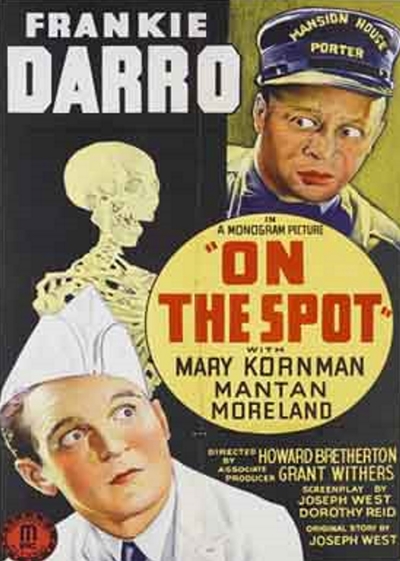 The last movie of the day — of the whole weekend, and of Cinevent’s 52-year history — was
The last movie of the day — of the whole weekend, and of Cinevent’s 52-year history — was 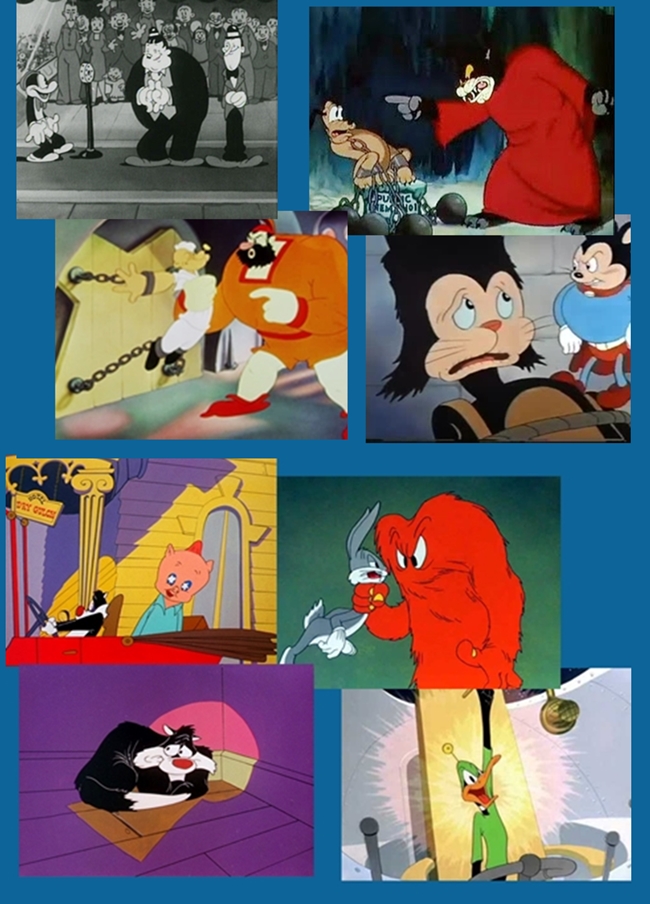 One of my favorites this year was the first one,
One of my favorites this year was the first one,  After the animation program, the Saturday kiddie matinee vibe continued, as it has most years — this time with a trio of silent Our Gang shorts from Hal Roach:
After the animation program, the Saturday kiddie matinee vibe continued, as it has most years — this time with a trio of silent Our Gang shorts from Hal Roach: 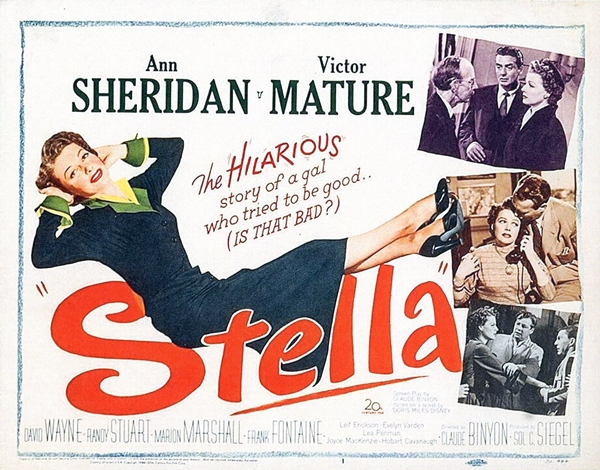 Back from lunch break, we saw
Back from lunch break, we saw 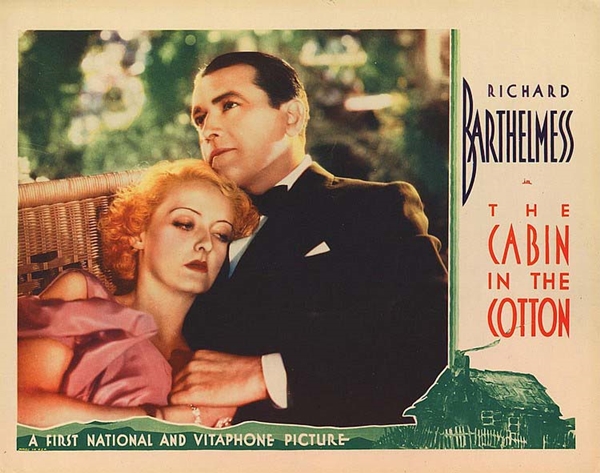 After Scott and Alan’s colloquy (moderated by Caroline Breder-Watts) Alan introduced another Michael Curtiz Pre-Code,
After Scott and Alan’s colloquy (moderated by Caroline Breder-Watts) Alan introduced another Michael Curtiz Pre-Code, 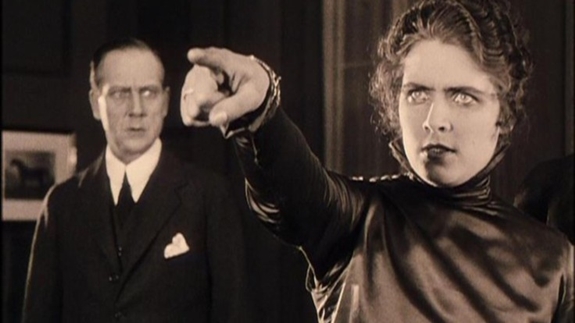 Then came
Then came 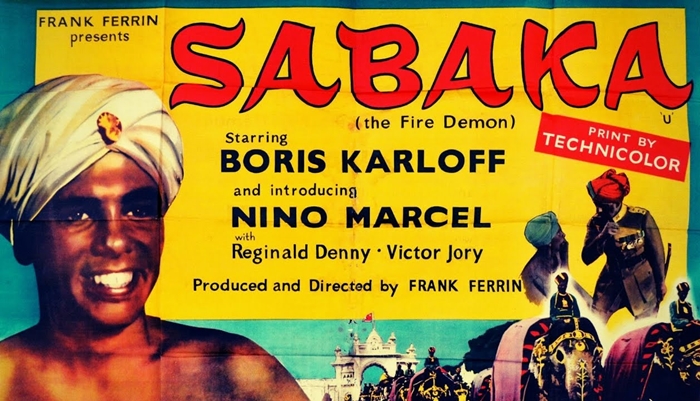 The day finished up with…oh jeez, how shall I put this?…one of the most indelible screenings of the whole weekend. This was
The day finished up with…oh jeez, how shall I put this?…one of the most indelible screenings of the whole weekend. This was 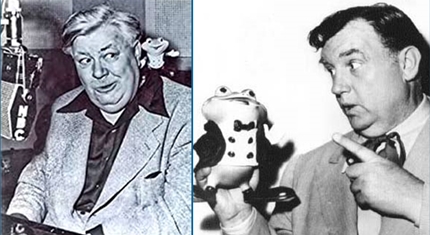 Just as Sabaka was going into release in 1954 — and in a possibly unrelated development — Smilin’ Ed McConnell dropped dead unexpectedly of a heart attack at 62. He was replaced by Andy Devine, and the show became Andy’s Gang until it finally ran its course at the end of 1960. Baby Boomers of a Slightly Younger Age may remember that incarnation of Froggy, Midnight, Gunga Ram and the rest of the gang.
Just as Sabaka was going into release in 1954 — and in a possibly unrelated development — Smilin’ Ed McConnell dropped dead unexpectedly of a heart attack at 62. He was replaced by Andy Devine, and the show became Andy’s Gang until it finally ran its course at the end of 1960. Baby Boomers of a Slightly Younger Age may remember that incarnation of Froggy, Midnight, Gunga Ram and the rest of the gang. The first feature of the day was the British film of Gilbert and Sullivan’s
The first feature of the day was the British film of Gilbert and Sullivan’s 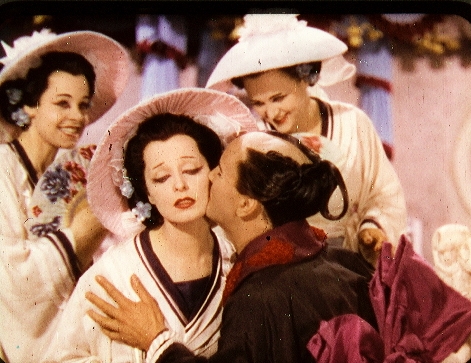 During production, Schertzinger reportedly received as many as 3,000 letters a week threatening “dire consequences” if he tampered unduly with the show’s sacred text. The letter-writers need not have worried; while the show was somewhat rearranged and several songs were cut to get the running time down to 90 minutes, the result was quite faithful to Gilbert and Sullivan’s satiric spirit. (And by the way, it was understood then, as it had been in 1885, that the butt of The Mikado‘s satire was Great Britain, not Japan.) In the New York Times, Frank S. Nugent called the movie “one of the most luscious productions of the operetta in history” (though he wondered if this purely theatrical piece was a good candidate for filming in the first place). Variety’s “Jolo” called it a “thoroughly ingratiating satire, carefully concocted.” The critics also praised the picture’s pastel Technicolor photography, which was justly nominated for an Academy Award (though of course this was 1939, and nothing was going to take that Oscar away from Gone With the Wind).
During production, Schertzinger reportedly received as many as 3,000 letters a week threatening “dire consequences” if he tampered unduly with the show’s sacred text. The letter-writers need not have worried; while the show was somewhat rearranged and several songs were cut to get the running time down to 90 minutes, the result was quite faithful to Gilbert and Sullivan’s satiric spirit. (And by the way, it was understood then, as it had been in 1885, that the butt of The Mikado‘s satire was Great Britain, not Japan.) In the New York Times, Frank S. Nugent called the movie “one of the most luscious productions of the operetta in history” (though he wondered if this purely theatrical piece was a good candidate for filming in the first place). Variety’s “Jolo” called it a “thoroughly ingratiating satire, carefully concocted.” The critics also praised the picture’s pastel Technicolor photography, which was justly nominated for an Academy Award (though of course this was 1939, and nothing was going to take that Oscar away from Gone With the Wind).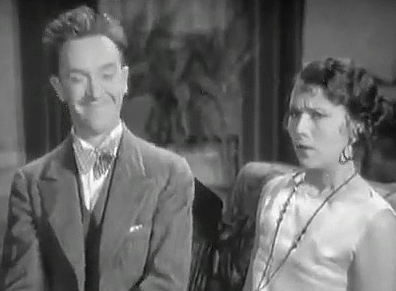 After The Mikado came some comedy shorts from Hal Roach’s Lot of Fun bookending the lunch break. Before lunch it was
After The Mikado came some comedy shorts from Hal Roach’s Lot of Fun bookending the lunch break. Before lunch it was  Film musical historian and aficionado Richard Barrios hosted a “Vol. 2” session of
Film musical historian and aficionado Richard Barrios hosted a “Vol. 2” session of 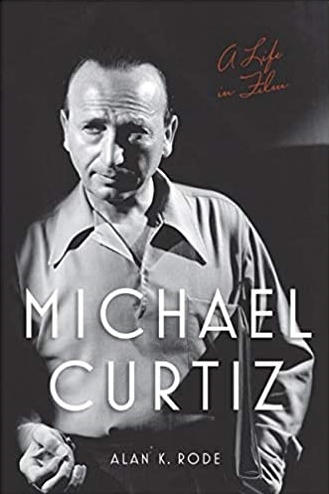 When the lights came up after Main Street to Broadway, it was time for dinner. When we came back, it was to a presentation by biographer Alan K. Rode, author of
When the lights came up after Main Street to Broadway, it was time for dinner. When we came back, it was to a presentation by biographer Alan K. Rode, author of  Dr. Jack
Dr. Jack 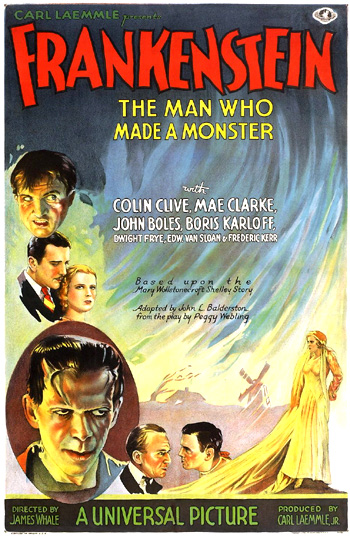 In keeping with Cinevent 52’s Halloween Weekend setting, Day 2 closed out with
In keeping with Cinevent 52’s Halloween Weekend setting, Day 2 closed out with 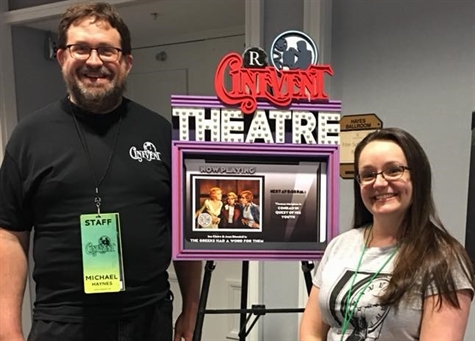 Cinevent, the venerable classic film convention that was a longtime fixture on Memorial Day Weekend in Columbus, Ohio, convened belatedly for the 52nd time October 28-31 this year. It was doubly belated, in fact — postponed from 2020 to 2021 by the COVID lockdown, then from May to October just to be on the safe side. Then this damned Delta Variant came along and seemed to threaten even that — but with vaccinations strongly encouraged and masks mandatory, the convention proceed as (re)scheduled.
Cinevent, the venerable classic film convention that was a longtime fixture on Memorial Day Weekend in Columbus, Ohio, convened belatedly for the 52nd time October 28-31 this year. It was doubly belated, in fact — postponed from 2020 to 2021 by the COVID lockdown, then from May to October just to be on the safe side. Then this damned Delta Variant came along and seemed to threaten even that — but with vaccinations strongly encouraged and masks mandatory, the convention proceed as (re)scheduled. 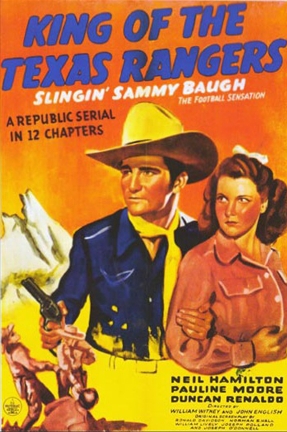 In the meantime, CMPS served as co-presenter of Cinevent 52, so let’s have a look at the program for this final year.
In the meantime, CMPS served as co-presenter of Cinevent 52, so let’s have a look at the program for this final year.
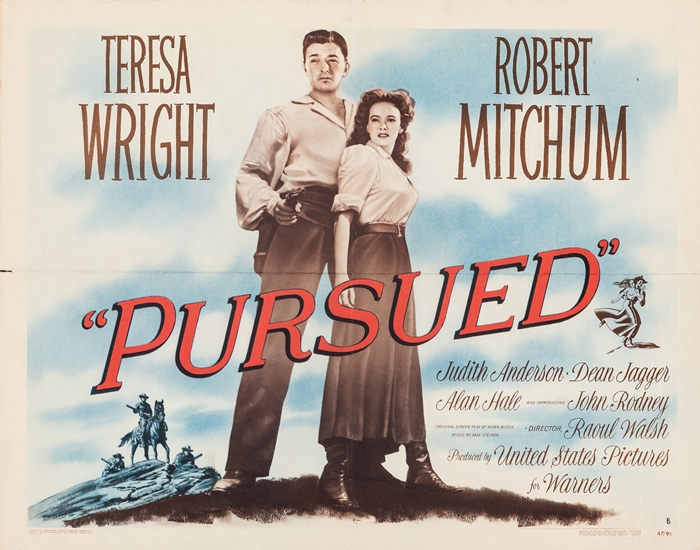 After the dinner break came the highlight of the day and one of the highlights of the whole weekend. This was
After the dinner break came the highlight of the day and one of the highlights of the whole weekend. This was 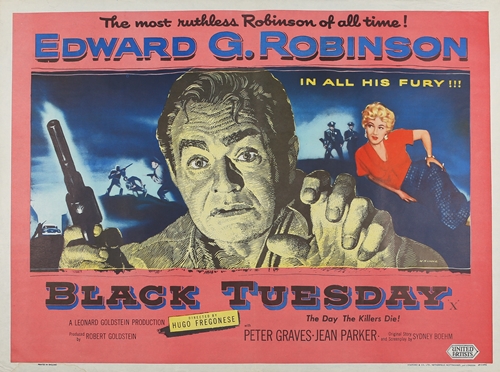 Then, just like that, it was back to melodrama for
Then, just like that, it was back to melodrama for 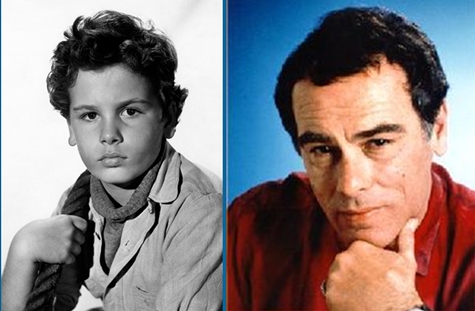 While preparing my post on the first day of this year’s Cinevent 52 in Columbus, Ohio, I learned of the passing of Dean Stockwell at his home in Ranchos de Taos, New Mexico on November 7 at the age of 85. Stockwell, boy and man, was one of the finest actors who ever faced a movie camera, yet he never quite received
While preparing my post on the first day of this year’s Cinevent 52 in Columbus, Ohio, I learned of the passing of Dean Stockwell at his home in Ranchos de Taos, New Mexico on November 7 at the age of 85. Stockwell, boy and man, was one of the finest actors who ever faced a movie camera, yet he never quite received 
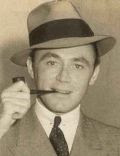
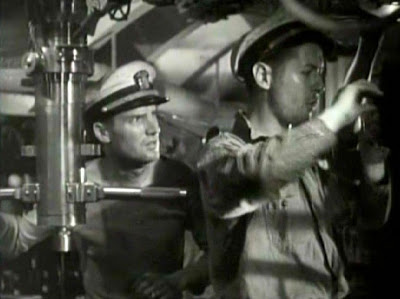
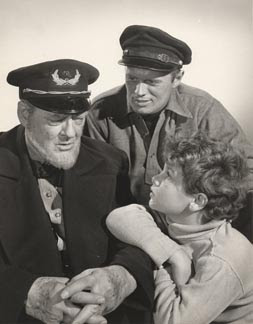
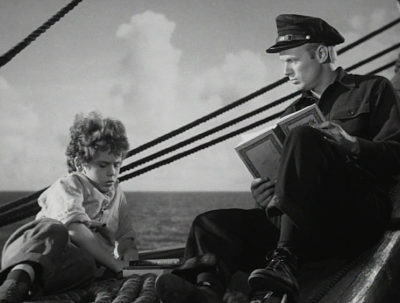
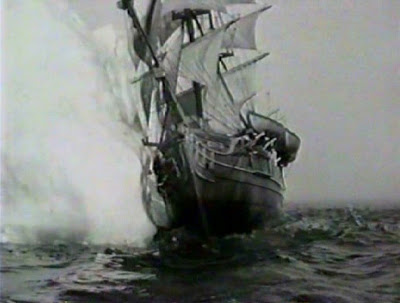

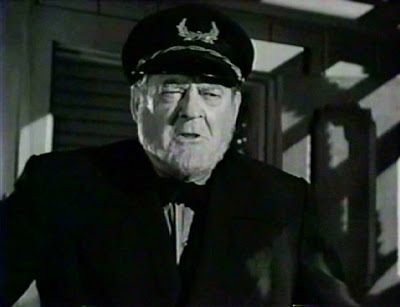

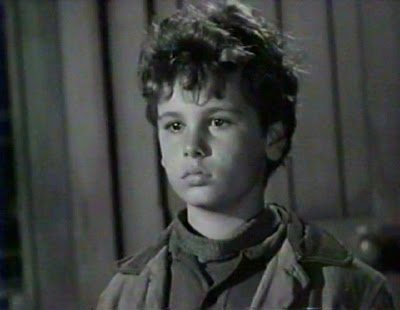

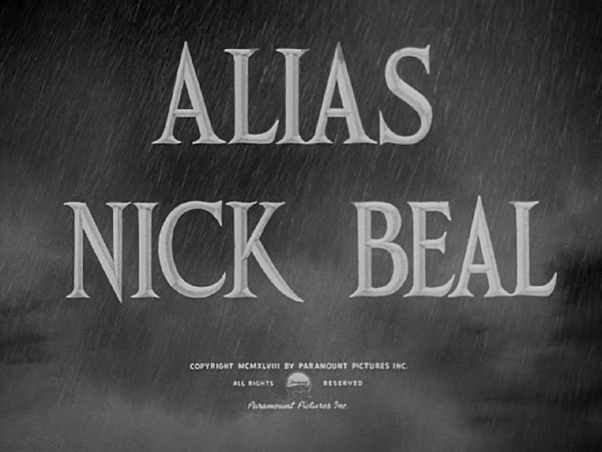 The Paramount mountain dissolves to a slate-colored sky pouring a torrential, whistling rain, riven by claws of lightning and rumbling thunder. There’s a crashing fanfare from composer Franz Waxman that sounds magisterial, commanding and insinuating all at once, then descends into a tortured, frantic violin scherzo. Next the names of the three above-the-title stars — Ray Milland, Audrey Totter, Thomas Mitchell — then the title itself. Alias Nick Beal is under way.
The Paramount mountain dissolves to a slate-colored sky pouring a torrential, whistling rain, riven by claws of lightning and rumbling thunder. There’s a crashing fanfare from composer Franz Waxman that sounds magisterial, commanding and insinuating all at once, then descends into a tortured, frantic violin scherzo. Next the names of the three above-the-title stars — Ray Milland, Audrey Totter, Thomas Mitchell — then the title itself. Alias Nick Beal is under way.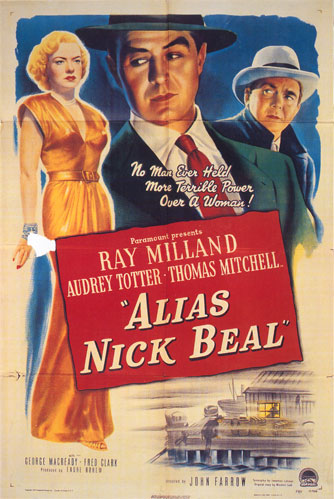
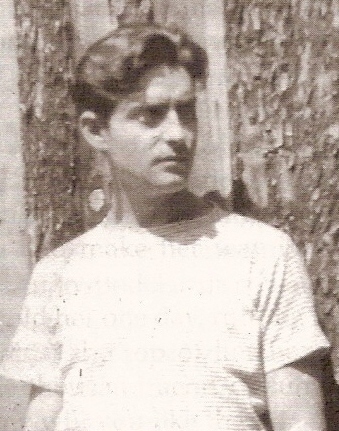
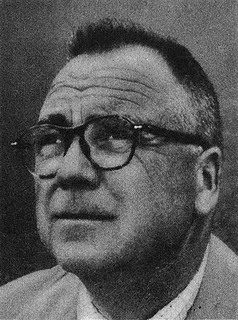
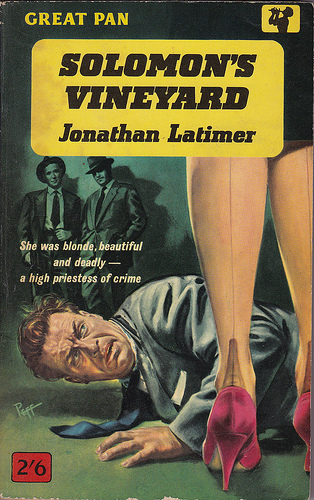
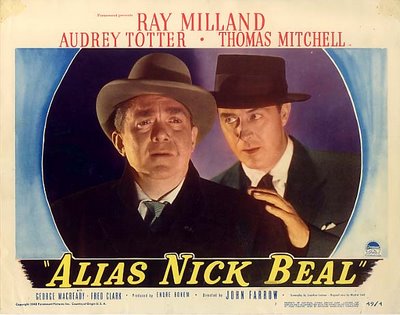
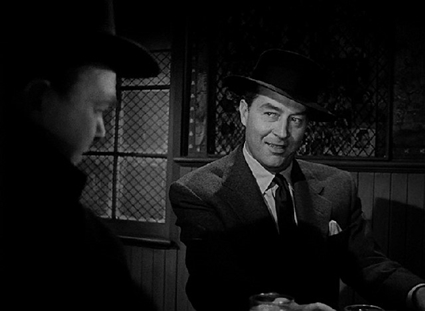 That’s when Foster receives a cryptic summons to a dingy dive down by the waterfront: “If you want to nail Hanson, drop around the China Coast at eight tonight.” The man he meets that night (Ray Milland) is clean-shaven and dapper, impeccably groomed and dressed, cutting a figure entirely at odds with the squalid little tavern where Foster finds him. His card reads simply: “Nicholas Beal, Agent”. “Agent for what?” asks Foster. Beal grins slightly. “That depends. Possibly for you.”
That’s when Foster receives a cryptic summons to a dingy dive down by the waterfront: “If you want to nail Hanson, drop around the China Coast at eight tonight.” The man he meets that night (Ray Milland) is clean-shaven and dapper, impeccably groomed and dressed, cutting a figure entirely at odds with the squalid little tavern where Foster finds him. His card reads simply: “Nicholas Beal, Agent”. “Agent for what?” asks Foster. Beal grins slightly. “That depends. Possibly for you.” Foster decides. He tucks the books under his arm, puts out the light, and makes his way out of the cannery by the beam of a flashlight Beal left behind. In the pitch dark of the outer room, his light startles a rat on a shelf. The rat squeaks plaintively and stares at Foster, eye to eye. We can almost read the rat’s mind, as clearly as if he were speaking: Welcome to my world.
Foster decides. He tucks the books under his arm, puts out the light, and makes his way out of the cannery by the beam of a flashlight Beal left behind. In the pitch dark of the outer room, his light startles a rat on a shelf. The rat squeaks plaintively and stares at Foster, eye to eye. We can almost read the rat’s mind, as clearly as if he were speaking: Welcome to my world.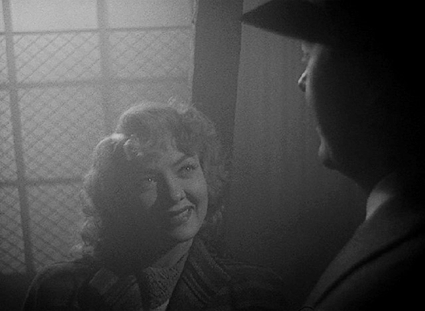
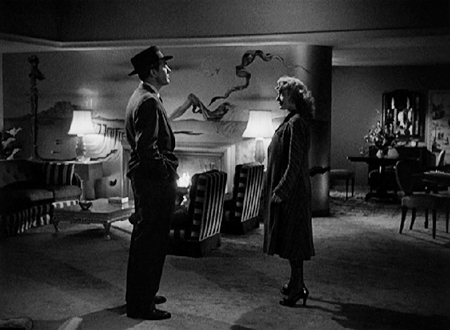

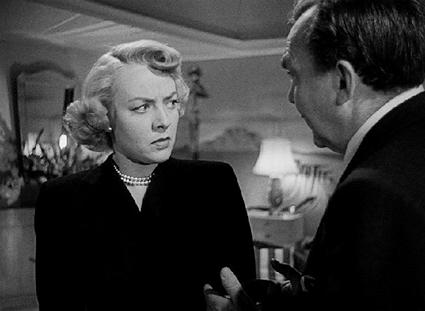
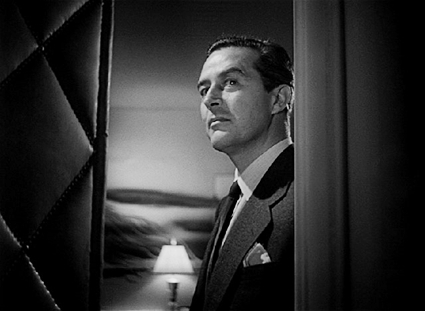 Naturally, the mainspring of Alias Nick Beal must be Ray Milland’s performance, and he’s nothing short of superb. His Beal is smooth, quiet, confident, glib. Nothing ruffles him. But don’t try to touch him. “I don’t like to be touched.” He says it simply, almost apologetic, but his meaning is clear: you won’t like what happens when you do something Nick Beal doesn’t like. When Beal once flares in anger, it’s over in an instant and his calm demeanor returns, but the moment is unnerving; though his eyes are angry slits in that moment, we can almost see the fires of Hell banked behind them.
Naturally, the mainspring of Alias Nick Beal must be Ray Milland’s performance, and he’s nothing short of superb. His Beal is smooth, quiet, confident, glib. Nothing ruffles him. But don’t try to touch him. “I don’t like to be touched.” He says it simply, almost apologetic, but his meaning is clear: you won’t like what happens when you do something Nick Beal doesn’t like. When Beal once flares in anger, it’s over in an instant and his calm demeanor returns, but the moment is unnerving; though his eyes are angry slits in that moment, we can almost see the fires of Hell banked behind them.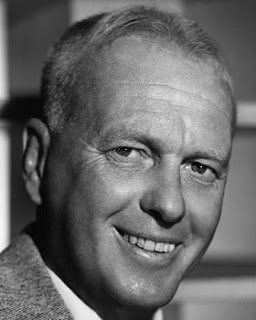
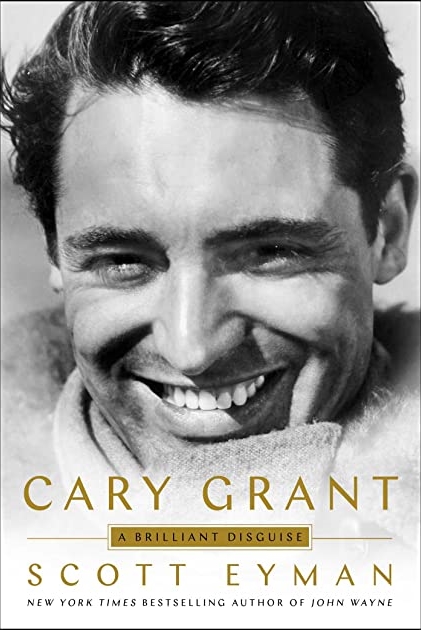 At Cinevent 50 in Columbus, Ohio in 2018, there was a moderated Saturday-afternoon discussion between historians Leonard Maltin and Scott Eyman. At one point, Leonard said of Scott:
At Cinevent 50 in Columbus, Ohio in 2018, there was a moderated Saturday-afternoon discussion between historians Leonard Maltin and Scott Eyman. At one point, Leonard said of Scott: For Archie Leach, the Cary Grant persona was, in Scott’s apt phrase, a brilliant disguise — but it was also a precarious balancing act. Somehow, through some alchemical mix of talent, timing, ambition and luck, this music hall acrobat from Bristol crafted a personality unlike any other. The only child of a feckless alcoholic father and an emotionally unstable mother (young Archie’s father committed her to a mental hospital and told the boy she had died; he didn’t learn the truth for over 20 years), Archie Leach managed to remodel himself into the epitome of urbane sophistication and the greatest romantic comedian in the history of the acting profession.
For Archie Leach, the Cary Grant persona was, in Scott’s apt phrase, a brilliant disguise — but it was also a precarious balancing act. Somehow, through some alchemical mix of talent, timing, ambition and luck, this music hall acrobat from Bristol crafted a personality unlike any other. The only child of a feckless alcoholic father and an emotionally unstable mother (young Archie’s father committed her to a mental hospital and told the boy she had died; he didn’t learn the truth for over 20 years), Archie Leach managed to remodel himself into the epitome of urbane sophistication and the greatest romantic comedian in the history of the acting profession.